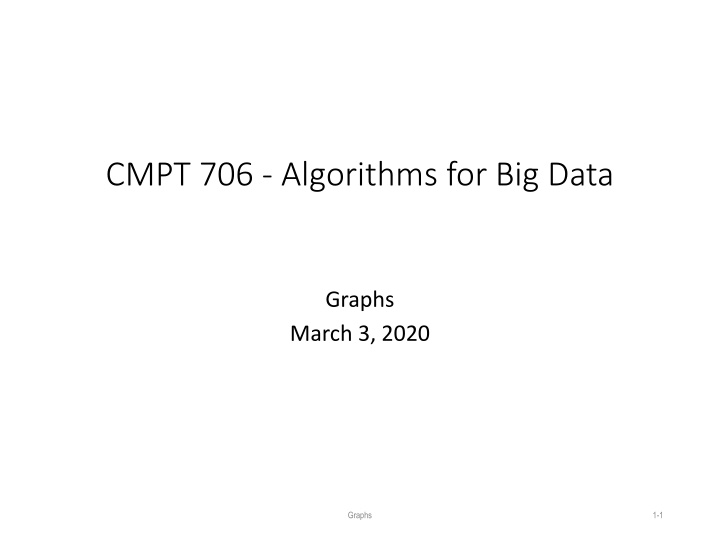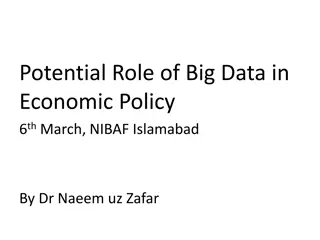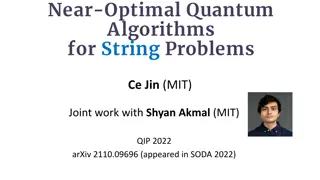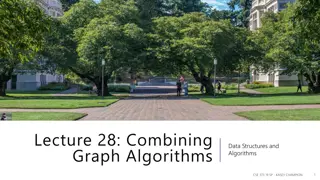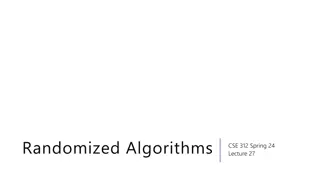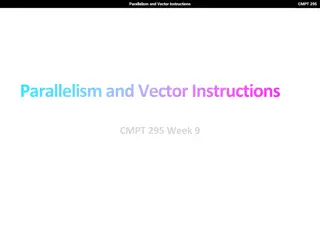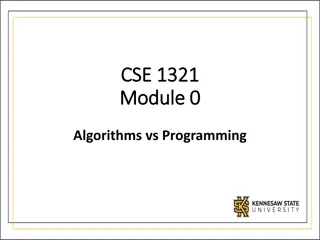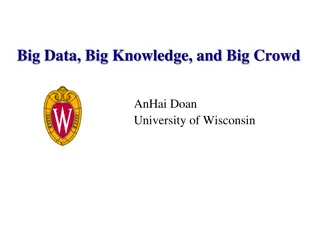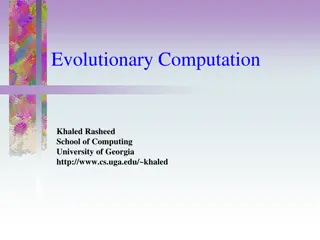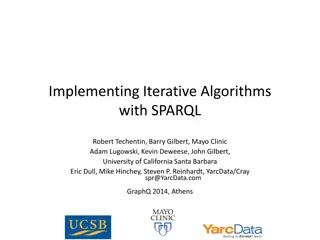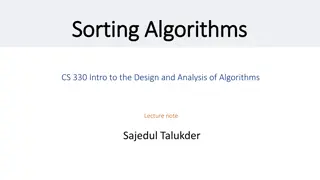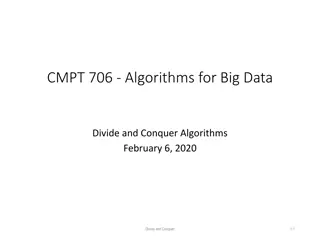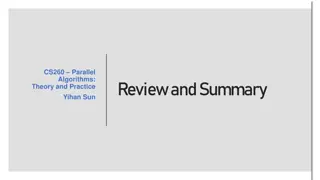CMPT 706 - Algorithms for Big Data
This course, "CMPT.706 - Algorithms for Big DataGraphs," explores the fundamental concepts and techniques related to graph algorithms for handling large datasets. Covering topics such as graph theory, graph traversal, clustering algorithms, and graph-based machine learning, the course guides you through the intricacies of processing and analyzing complex data structures. By learning about the latest advancements in graph algorithms, you will acquire the skills needed to tackle data-related challenges effectively in various domains.
Download Presentation

Please find below an Image/Link to download the presentation.
The content on the website is provided AS IS for your information and personal use only. It may not be sold, licensed, or shared on other websites without obtaining consent from the author.If you encounter any issues during the download, it is possible that the publisher has removed the file from their server.
You are allowed to download the files provided on this website for personal or commercial use, subject to the condition that they are used lawfully. All files are the property of their respective owners.
The content on the website is provided AS IS for your information and personal use only. It may not be sold, licensed, or shared on other websites without obtaining consent from the author.
E N D
Presentation Transcript
CMPT 706 - Algorithms for Big Data Graphs March 3, 2020 Graphs 1-1
Minimum Spanning Trees Graphs 1-2
Minimum Spanning Tree (MST) Let G=(V,E) be an undirected connected graph. A subset T E is called a spanning tree of G if (V, T) is a tree. That is, T has |V|-1 edges and the graph (V,T) is connected. Suppose that each edge e has a positive weight ce>0. Then every spanning tree has an associated weight ? ???. The Minimum Spanning Tree Problem (MST) Input: an undirected graph G = (V,E) with weights on the edges {ce : e E} Output: a spanning tree of minimum weight Graphs 1-3
Minimum Spanning Tree (MST) a a 1 1 2 2 MST: 3 b c b c 3 2 1 1 2 8 3 5 d e f d e f 3 2 1 1 7 g h g h Graphs 1-4
Two Greedy Algorithms Graphs 1-5
Kruskals Algorithm Input: an undirected graph G = (V,E) with weights on the edges {ce : e E} Output: a spanning tree of minimum weight 1. 2. Set T = empty set While |T| < |V|-1 do a) Pick an edge e E\T with minimum weight such that T {e} does not contain a cycle. b) Add e to T Graphs 1-6
Kruskals Algorithm - example a a 1 1 2 2 MST: 3 b c b c 3 2 1 1 2 8 3 5 d e f d e f 3 2 1 1 7 g h g h Graphs 1-7
Kruskals Algorithm: Correctness Lemma (the Cut Property): Suppose that set X of edges is a part of a minimum spanning tree. Let S be a nonempty subset of vertices, S V, such that ? does not cross between S and V\S. Let e be the minimum weight edge connecting S to V\S. Then X {e} is contained in a minimum spanning tree. Proof: [exchange argument] Fix a spanning tree T that contains the edges X, and suppose that e T. Let s add e to T. This will create cycle in T This means that we can remove another edge e from T such that 1) e is an edge from S to V\S 2) ce <= ce 2) Removing e turns T into a tree again Graphs 1-8
Kruskals Algorithm: Correctness e t u e v w r V\S q S e Graphs 1-9
Kruskals Algorithm: Correctness Theorem: Kruskal s algorithm produces a minimum spanning tree. Proof: 1) The output T is a spanning tree because T contains no cycles T has |V|-1 edges 2) T has minimum weight. This is because Claim: In every step all edges added by Kruskal s algorithm so far must belong to some minimum spanning tree. Proof of claim: By induction on the steps of the algorithm. Let T be a tree so far, and consider the next added edge (v,w). - Let S be the vertices reachable in T from v. Clearly v S, and w S. - The edge (v,w) is the lightest edge connecting S to V\S. - Therefore, but the cut property S { (v,w) } belongs to some spanning tree Graphs 1-10
Kruskals Algorithm: Runtime Runtime: Suppose G has n vertices and m edges. Straightforward analysis: We add n-1 edges, each time looking for the lightest edge that does not close a cycle. Kruskal s algorithm runs in time at most < n * m * (m+n) = O(m2n) Using a good data structure that efficiently stores connected components we can construct a MST in time O(m log(n)). See Section 5.1.4 A data structure for disjoint sets in the book Graphs 1-11
Prims Algorithm Input: an undirected graph G = (V,E) with weights on the edges {ce : e E} Output: a spanning tree of minimum weight Choose some vertex s V Set S = {s} and T = empty set While |S| < |V| do 1. 2. 3. pick v V \ S such that ?= ?,? ,? ??? is minimal min add to T the lightest edge between v and S add v to S Return T 4. Graphs 1-12
Prims Algorithm - example a a 1 1 2 2 MST: 3 b c b c 3 2 1 1 2 8 3 5 d e f d e f 3 2 1 1 7 g h g h Graphs 1-13
Prims Algorithm: Correctness Theorem: Prim s algorithm produces a minimum spanning tree. Proof: 1) The output T is a spanning tree because T contains no cycles T has |V|-1 edges 2) T has minimum weight. Skip for today Graphs 1-14
Prims Algorithm: Runtime Runtime: For a graph G with n vertices and m edges Na vely we have n iterations, and in each iteration we add a vertex of minimal cost . Therefore, the runtime is O(nm) This can be improved to O(n log(n) + m log(n)). Graphs 1-15
Homework and Reading for next time Exercises from the Book: 5.1, 5.2, 5.3, 5.4, 5.8, 5.9 Reading 5.1.4, 5.2, Graphs 1-16
